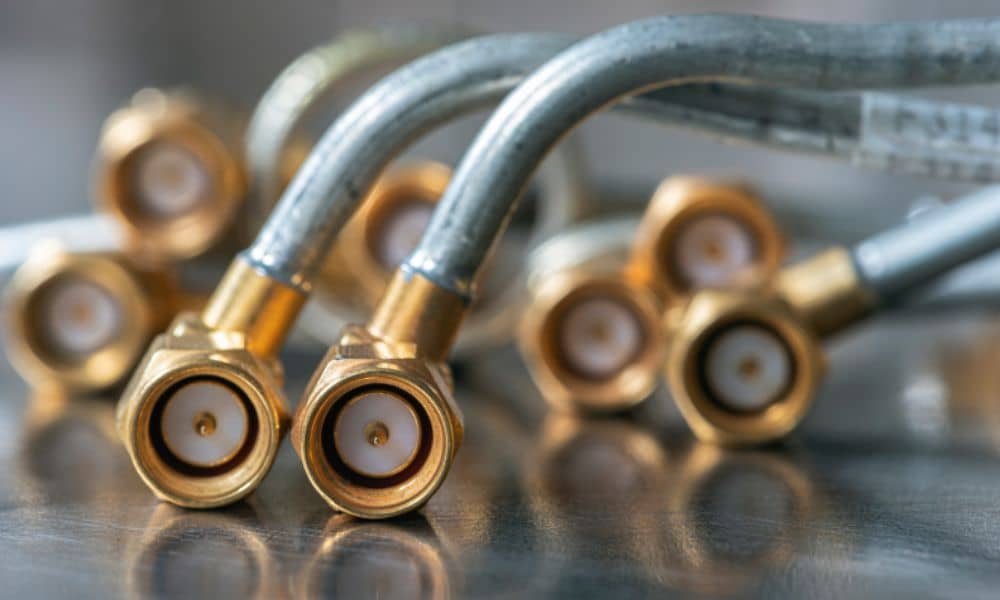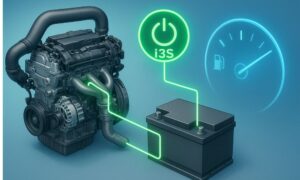In an era of fast data with great precision electronics, maintaining the quality of signals is paramount. So, whether you are streaming a 4-K video, doing a satellite transmission, or configuring a secure communications network, coax cables are likely somewhere in the mix of cables.
But what keeps these signals clear, uninterrupted, and efficient? The answer lies in one component, the dielectric insulator, that is rarely noticed.
The dielectric insulator has considerable importance on coax cables, as it has a significant impact on the structure and performance capabilities of coax cables, directly affecting signal strength, quality, and reliability. What dielectric insulators are, why they matter, and how they help coax cables perform to specification.
What is a Coaxial Cable?
To understand dielectric insulators we’re going to have to take a step back. Let’s consider the structure of a coaxial cable. Coaxial cables are often found in:
- Cable television systems
- Internet connections
- Radio transmitters
- Military and aerospace communications
A typical coaxial cable includes:
Inner Conductor – Carries the electrical signal.
Dielectric Insulator – Surrounds the inner conductor.
Outer Conductor (Shield) – Grounds the signal and prevents electromagnetic interference.
Outer Jacket – Protective plastic covering.
The dielectric is the second layer, after the core conductor and before the outer shielding, and is essential to the performance of the cable.
What is a Dielectric Insulator?
A dielectric insulator is a nonconductive material that provides insulation between conductive devices–in this case, between the inner and outer conductors of the coaxial cable. The primary purpose of a dielectric is to absorb electrical energy and manage the propagation of electromagnetic fields between conductors.
Many dielectric materials are commonly used including:
- Polyethylene (PE)
- Teflon (PTFE)
- Foamed Polyethylene (FPE)
- Polystyrene
- Air (in highly accurate cables)
All of these dielectrics have unique dielectric constants or values that measure how much electrical energy can be absorbed.
Why Dielectric Insulators Matter in Coaxial Cables
Now let’s break down exactly why the dielectric layer is essential and what impact it has on the overall performance of the cable.
1. Maintaining Impedance Consistency
Coaxial cables are made to have a predetermined characteristic impedance. This impedance is usually set to either 50 or 75 ohms. The dielectric insulator is important to the impedance specification, as it is one of the contributing factors that provides the determined impedance.
When the dielectric constant of a coaxial cable changes – whether through poor material quality, or uneven thickness of the dielectric – the impedance will no longer be what it is supposed to beand this will result in the following:
- Signal reflection
- Reduced transmission efficiency
- Data loss
2.Minimizing Signal Loss (Attenuation)
A poor quality or improper dielectric will increase attenuation—the lost signal strength over distance. A quality dielectric will allow:
- Signals to travel further distance
- Least amount of signal degradation
- Slightly better signal-to-noise ratio
Foamed dielectrics are routinely used in high-frequency applications for many reasons, including the reduced loss.
3. Preventing Electromagnetic Interference (EMI)
The shield layer accounts for the vast majority of EMI protection but the dielectric does help maintain appropriate spacing in between conductors. Regardless of whether they are coated with dielectric material, maintaining space in between conductors helps to prohibit unwanted electromagnetic coupling that can alter signals and affect security.
4. Thermal Stability and Durability
Dielectric materials – PTFE (Teflon), for example – are thermally resistant. This is important in high-performance applications, such as aerospace and military applications, because they will also face:
- Physical stresses
- Environmental degradation
High-quality dielectrics can help prevent melting, shrinking, or dielectric breakdown; all of which could lead to cable damage, or failure.
5. Capacitance Control
Capacitance refers to the ability of the cable to store energy using an electric field. Dielectric material directly affects this. A dielectric that is stable and has low capacitance:
- Increases accuracy of our signals
- Increases speeds
- Decreases transmission delays
In the application of digital or high-frequency, it is crucial to control the capacitance closely to maintain integrity of signals.
Types of Dielectric Insulators and Their Effects
| Material | Dielectric Constant (approx.) | Advantages | Typical Use |
|---|---|---|---|
| Solid Polyethylene | 2.25 | Low-cost, good for short distances | Cable TV, CCTV |
| Foamed Polyethylene | 1.5–1.7 | Low-loss, better signal integrity | High-frequency applications |
| PTFE (Teflon) | 2.1 | High-temperature resistance | Aerospace, military |
| Air (with spacers) | ~1.0 | Minimal signal loss | Precision RF and lab equipment |
Applications That Depend on Dielectric Insulators
- RF (Radio Frequency) systems
- HD digital video broadcasting
- Satellite communication
- Broadband internet over coax
- Military radar systems
In each of these fields, the performance of the dielectric insulator can directly determine the success or failure of the communication system.
Conclusion: A Small Layer with Massive Impact
Although dielectric insulators can be small physically, their impact on coaxial cable performance can be large.
They help determine the impedance, provide some level of signal loss reduction, provide a degree of interference shielding, provide physical protection, and are a component of safely passing high level signals, amongst other things.
This internal layer plays a significant role in transmitting a signal faithfully and efficiently.
Understanding the role of dielectric insulators is impactful, making it easier for engineers, technicians and consumers to choose their equipment wisely, as the industry enters a faster digital communication, and networking environment.
Keeping this in mind next time you connect your coaxial cable, there are many factors in the journey of signal across copper and shielding, in-between dielectric insulators.
Frequently Asked Questions (FAQs)
What does the dielectric insulator do in a coaxial cable?
The dielectric insulator, or insulator, in a coaxial cable helps maintain a constant distance from the inner conductor to the outer conductor (shield) while keeping them electrically insulated from one another.
The dielectric helps to maintain the characteristic impedance of the cable, ultimately minimizing signal loss and provides a medium for effective electromagnetic wave propagation.
How does the dielectric material affect the quality of the signal?
The type and quality of the dielectric material helps determine the strength of the signal, the stability of the impedance and the attenuation rate of the transmission line.
A low-loss dielectric material such as foamed polyethylene or PTFE, improves electrical integrity and limits signal degradation over long distances, and especially in high-frequency applications.
What is the dielectric constant, and why is it important?
The dielectric constant (or equivalent relative permittivity) is a measure of the amount of electrical energy that can be captured and stored by a material. A lower dielectric constant, means less delay and lower capacitance for a coaxial cable, which is important in designing for maintaining high-speed and high-frequency coaxial cable.
Which dielectric materials are often present in coaxial cables?
Common dielectric materials are:
- Solid Polyethylene (PE)
- Foamed Polyethylene (FPE)
- Polytetrafluoroethylene (PTFE or Teflon)
- Polystyrene
- Air (in precision cables with spacers)
Each substance has its appropriate characteristics to meet environmental and performance requirements.
Will a damaged dielectric insulator impact performance of the cable?
Yes. A damaged or degraded dielectric could cause an impedance mismatch, a rise in attenuation, an EMI issue, or even have conductive contact between the inner and outer conductors (a short). It is pivotal to ensure your dielectric is intact for optimum cable performance.



